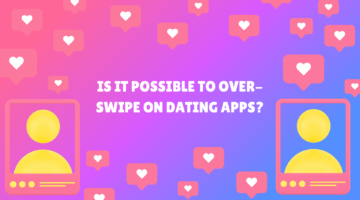3 Studies Refute Idea that Exposure to Sexy Centerfolds Harms Men’s Relationships
November 30, 2016 by Justin Lehmiller
A study from the 1980s found that heterosexual men who viewed images of Playboy and Penthouse centerfolds reported less love for their romantic partners than men who saw images of abstract art [1]. Since then, this study has been cited frequently as evidence of the damaging effects of porn. However, I’ve always had some concerns about this study and everything that has been made of it in the media, which I expressed a few years back on my blog (see here). It turns out that there’s now even more reason for skepticism in light of the fact that a group of researchers who just tried to replicate this finding couldn’t.
At this year’s meeting of the Society for the Scientific Study of Sexuality, I attended a presentation that reported the results of three separate attempts to replicate the original 1980s study (see here for other research highlights from this conference) [2]. This research team consulted with the lead author of the original 1980s study with the goal of successfully replicating their finding (in fact, they went into this thinking that they would indeed find that men who were exposed to sexy centerfolds would report less love for their partners).
In both the original and replication studies, participants (all of whom were currently in heterosexual relationships) were randomly assigned to view either 16 opposite-sex centerfolds from adult magazines or 16 images of abstract art. Afterwards, they completed a questionnaire that included items about how attracted they were to their partner, as well as how much love they felt for their partner.
The main differences between the original study and the replication attempts were that (A) the original study was conducted in a research lab, whereas the replications were conducted online, and (B) the replications included much larger samples than the original study. Specifically, the original study included just 30 men in total (something that has always been one of my big concerns about this particular study, given that findings obtained with small samples have a tendency to be unreliable). By contrast, each of the three replication studies included at least 120 men (they also included at least 90 women).
What the replication studies revealed is that, contrary to the original study, exposure to images of Playboy and Penthouse centerfolds was not linked to feelings of less love for or attraction to one’s partner among men (incidentally, the same was true for women exposed to Playgirl centerfolds vs. abstract art, which is consistent with the original study).
It’s important to note that there was a difference in how these studies were conducted—online vs. in a lab. It’s possible that this might be responsible for the different findings; however, if that’s the case, it would raise important questions about why this effect only occurs in laboratory settings and whether it actually has any real world implications, especially given that the internet is the way most porn is viewed these days.
It’s also important to consider that these studies were conducted 27 years apart. Availability of porn and levels of porn exposure are certainly higher today than they were in the 1980s. Thus, it’s possible that cultural changes in exposure to or attitudes toward porn could potentially account for the differences.
With all of that said, these replication attempts suggest that people should stop drawing sweeping conclusions from the original 1980s study and reconsider the popular idea that exposure to pornography necessarily has a negative impact on how men feel about their partners.
Want to learn more about Sex and Psychology? Click here for previous articles or follow the blog on Facebook (facebook.com/psychologyofsex), Twitter (@JustinLehmiller), or Reddit (reddit.com/r/psychologyofsex) to receive updates.
[1] Kenrick, D. T., Gutierres, S. E., & Goldberg, L. L. (1989). Influence of popular erotica on judgments of strangers and mates. Journal of Experimental Social Psychology, 25, 159-167. doi: 10.1016/0022-1031(89)90010-3
[2] Balzarini, R. N., Dobson, K., Chin, K., & Campbell, L. (2016). Does exposure to erotica reduce attraction and love for romantic partners in men? Independent replications of Kenrick, Gutierres, and Goldberg (1989) study 2. Journal of Experimental Social Psychology.
Image Source: 123RF.com/Andriy Popov
You Might Also Like:

Dr. Justin Lehmiller
Founder & Owner of Sex and PsychologyDr. Justin Lehmiller is a social psychologist and Research Fellow at The Kinsey Institute. He runs the Sex and Psychology blog and podcast and is author of the popular book Tell Me What You Want. Dr. Lehmiller is an award-winning educator, and a prolific researcher who has published more than 50 academic works.
Read full bio >


